Canadian Defence Minister Harjit Sajjan has announced that Canada will upgrade and expand its fleet of 14 CH-149 Cormorant helicopters with at least two aircraft.
The AgustaWestland CH-149 Cormorant is the Canadian Forces designation for the AgustaWestland AW101, known as Merlin in UK service.
The Cormorant Mid-Life Upgrade project is valued at up to $1.39 billion. The fleet will receive at least two additional helicopters and be upgraded to extend its life to at least 2042.
Lieutenant-General A.D. Meinzinger, Commander of the Royal Canadian Air Force said:
“Every year, the Royal Canadian Air Force flies about 1,000 missions in support of search and rescue, a core mission of the Canadian Armed Forces. These upgrades to the CH-149 Cormorant, and an increase in fleet size ensures the RCAF will continue to deliver search and rescue services in the challenging Canadian environment.”
Harjit S. Sajjan, Minister of National Defence said:
“Canadians rely on the women and men of the Royal Canadian Air Force to conduct successful search and rescue operations in challenging circumstances. These enhancements to the CH-149 Cormorant fleet will ensure that search and rescue crews have the right equipment to continue providing these life-saving services.”
According to firm Leonardo in a release:
“The CMLU program will upgrade the Cormorants to the latest AW101-612 standard, currently being delivered to Norway, providing a low risk upgrade path with a modern, proven solution. These capability enhancements and equipment improvements will include state-of-the-art avionics, a new “glass cockpit”, the addition of the latest sensors, radar and search enhancement technology, more powerful digitally-controlled engines, wireless in-cabin communications, LED lighting, rescue hoist upgrades, synthetic training solutions and more, enabling the Cormorants to spend less time searching and more time rescuing stranded Canadians.
Leonardo, as Team Cormorant prime contractor, will work closely with IMP Aerospace and Defence to deliver the CMLU program in Canada, with the work undertaken by Canadians. CAE will deliver Canada’s first AW101 full motion simulator and other synthetic training capabilities. GE Canada will provide the new engines and Collins Aerospace will provide the new cockpit displays and avionics. Other Canadian suppliers will be engaged through a robust Industrial Technological Benefits (ITB) and Value Proposition program which will deliver the maximum value of the CMLU and fleet expansion to Canada.”


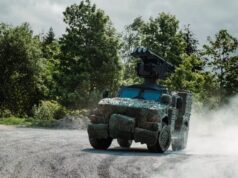
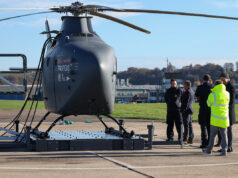
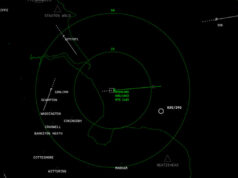
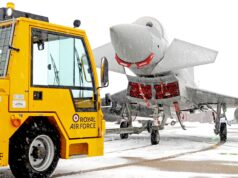
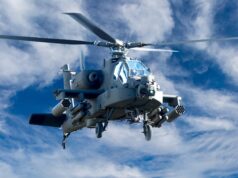
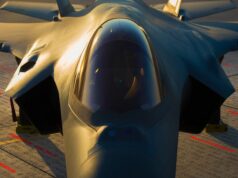
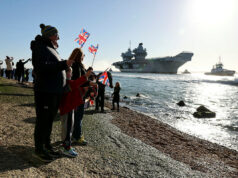

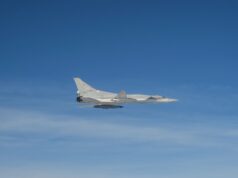

Don’t hold your breath, Canada’s history of military projects, contracts and upgrades have been laughable if it wasn’t so sad! Political interference and constant changing of the goal posts, has made Canada another paper tiger. Good lads and lasses in uniform yet again let down by those in power!
Actually, this is one program that will probably be completed successfully and on time. Although the Canadian Coast Guard is in charge of SAR missions in Canada, the air missions are actually conducted by the Royal Canadian Air Force using these Cormorants, C-130s, and other helicopters. The rugged terrain, vastness and Canadian weather, makes this a daunting mission. Given the fact that these helicopters are really civilian, rather than military assets, Canadians have no problem financing and procuring them.
Possibly but we will see!
You are so right. It’s worth remembering that they ordered a fleet of 101’s to replace their ASW Sea Kings about 25 years ago, at the same time as these aircraft were ordered. A change of Government and the order was cancelled, and Westland got 100’s of millions in compensation. And the Navy are only now getting their new Sikorsky helos to replace them. Compare and contrast with how the Aussies do it.
LOL. You mean, like the Tigers?
You have a point about the Tigers, which was a debacle, as was the proposed purchase of the SH 2 from Kaman for the Navy. They cancelled that one and bought SH 60 instead. I think that they have learnt from past mistakes, and when they want something they stay focussed, such as the F18 E/F/G buy a few years ago. However it will be interesting to follow the T26 programme over the next few years.
Canada bought British SAR helicopters.
The UK Government though spent the money on 12 American ones instead, both spending UK tax money on jobs in the US and undermining the UK potential exports of SAR helicopters. Why would a third country buy British if the British did not?
How much if any of these helicopters are made in the UK. I get the impression any ordered for the UK are manufactured here but the bulk of the work has been moved to Italy. I’m surprised this did not do better on the export market as a replacement for the sea king considering its lack of competition. When the UK eventually replaces the Puma will this fill the role or will we purchase something smaller off the shelf?
I was a bit worried about this comment; so I looked it up. In July last year, the MD of Leonardo UK – trying to give assurances about UK jobs – confirmed that all Italian 101 production had already been shifted to the UK, now sole manufacturer for UK and export Merlin / 101s.
Frankly I was surprised, but I call that good news.
The fact the RAF didn’t like it’s medium lift Merlins probably means it would not replace Puma. More Chinooks likely to replace Puma
What is the thinking behind their dislike?
They didn’t really dislike them. They were new in service and were not ready for deployment immediately in Iraq and Afghan. The usual spares issues were encountered as well. Once in Iraq and Afghan they suffered from the same hot and high restrictions that all helo’s had. The only helo that did really well was Chinook because of the dual rotor set up, even then it had its max weight reduced.
Truth is Merlin is far too expensive to replace Puma, which is really, really cheap to operate. It was a smart move for them to be moved exclusively to the RN (although why they weren’t bought as marinised is one of lifes big mysteries..). If the RAF wants to replace Puma they could buy additional Chinook, but we’ve got plenty of them. What we really need is a cheap to operate medium lift helo. An AW149 buy would make a lot of sense.
But….what the RAF might have in mind is to keep Puma running as long as possible. They could then replace with the outcome of the US FVL programme. Either the V-280 Valor or Defiant would make an excellent replacement and offer the RAF some serious CSAR capability.
Or we could just bite the bullet and move all rotary wing to the RN and Army…
Expensive to operate, maintenance intensive, carries significantly less troops than a Chinook but only a few more than a Puma and it has a sling load inferior to the Puma HC2.
Merlin has a landing footprint almost as large as the Chinook so any place a Merlin can fly into so can a Chinook. If the landing area is smaller the only choice is the Puma. In effect it takes up the space of a Heavy helicopter with the operating costs to boot but is no better and in some cases worse than Puma in the Medium role.
It was forced upon the RAF to soften the political blow of ordering more Chinook and the failure to get on with replacing the Puma with a suitable type like Blackhawk.
What Merlin is good at is going fast over water for long distances with triple engine redundancy, so basically ASW and SAR where it has got a fair amount of sales and is arguably the best type in the world for those roles.
It is telling that the Oil and Gas industry plus heli-liner services won’t touch the Merlin but absolutely love the S92. The latter is a simpler twin engine type.
I’ve been wondering what will replace the puma, Merlins are a bit expensive though but no doubt the factory could do with the orders. And the gazelles, they will need a replacement soonish but what with?
My assumption is they will be let to go out of service and then not replaced.
I have seen numerous articles putting the cost of a Merlin in the £20-28m per unit range, which is far better value than a wildcat which comes in the £40-50m per unit range.
A bit like the apache, it seems better to purchase new than do any modifications / upgrades.
The Puma is a great helicopter that should be purchased by DFID from the mod for humanitarian work. this then allows us to purchase whatever new helicopter we need.
The Merlin is a great product at an amazing price point and one we can certainly do with a lot more of imo. It really should be the workhorse of the RN at least and probably the army as well.
I’d go along with that as the current SHF is considerable, maybe even a little heavy and FOREX will make any new buy via FMS expensive (meaning they need to make a saving somewhere) and the RAF keep saying they aim to replace older Chinook airframes. I really don’t see Puma being replaced.
Gazelle’s need replacement, the most obvious replacements are the H135 or H145 which are already in service with the Defence Helicopter School.
We need these helo’s as using Wildcat to carry around Brigadiers and their staff is a serious waste of resource. And its a job that will always be there.
The RN could also do with a small number as well. It makes no sense for Wildcat, which are in short supply, to be deployed on an RFA in the Caribbean during hurricane season. It’s limited lift is a serious downside, and its far too expensive to buy and run for such tasks. Planeguard is another job that Merlin or Wildcat should not be used for. RFA and QE Class aren’t short of deck or hangar space so the need for a helo with really small footprint (and remember the Wildcat’s tailboom doesn’t fold like Lynx’s did) isn’t as great.
Perhaps the best idea, particularly with the Westland tie up, is to purchase a small number of AW109 and AW139. Both are cheap to buy and run, they’ve been built in large numbers and will continue to be so. Both twin engined and have been used on ships both have the ability to land small teams and their gear (e.g EOD teams). They can also sling load and carry more in the cabin than Wildcat. Keep it simple with a FLIR turret, rescue hoist, basic self protection and basic weaponry (e.g. pintle machine gun and rocket pods) if required. Leave the Wildcat, Merlin and Chinook to be the first line machines.
There were a few issues using the Merlin as a battlefield support helicopter.
1. When introduced it was the first aircraft to have a predominantly composite skin. (Harrier GR5 main wing notwithstanding) When the aircraft first operated in Iraq, it took quite a few hits from small arms. These needed repairing, however nobody had really considered how it would be done in the field. Each repair required a specific scheme from Westlands. This took an inordinate amount of time to sort out. It was partly to blame for the aircraft’s really poor availability. Compared to the Chinook where small arms damage generally required a quick patch repair and would be ready again within the hour (unless primary structure was damaged).
2. The Merlin’s ramp is bloody steep. When it gets wet it’s a nightmare to walk up. Face planting whilst wearing a Bergen was not fun.
3. The actual footprint of the aircraft is nearly the same as a Chinook. This means it has to land carefully and generally outside compounds. The Puma is about half the size, so could land within a compound. For all the Puma’s faults it can still carry a team of 10 with their kit and drop them in confined spaces.
When the MoD was looking at buying the Chinook mk3s, the US also made part of the bid 20+ blackheads. The MoD cancelled the blackhawks and kept the Chinooks. Never found out why, as Westlands would have licensed built the blackhawks.
The Puma really does need to go. In a tri-service environment where we need every asset to be capable from working off ships. The Puma can’t do this. It’s main saving grace is that you only need to take the blades off when putting it in a A400 or C17, so it could be up and flying again in an hour.
That’s a FINE looking helicopter. The US Presidential helicopter would have been the most beautiful flying machine on earth since the Spitfire….
I remember reading that the Canadians purchased the 7 AW101s that had been built for the earlier failed US Presidential Helo project. That led to speculation that they would add 7 Cormorants to the 14 they already had.
Glad to hear that the project is underway. Bit of a let down to hear that they’re only adding two airframes from the 7 spares they have.
The 7 airframes weren’t all complete. They’ll be able to cobble together 2 complete ones and use the remainder to support the rest of the fleet for years to come.
They got a spectacular deal on them. It’s actually a real pity the UK couldn’t jump on the VH-71 deal at the time. We could have got some dedicated Merlin for the Crowsnest mission at basement prices. Mind you with 8 x HM.1 in storage (in various states of disrepair) any spare money should really be dedicated to getting them airworthy in HM.2 configuration first. Interestingly, the Italian Navy has 4 AW.101 in storage. Their cut price AEW version apparently did not work well at all. They’re all now in storage for the foreseeable.
Crowsnest could get some actual export success if we pushed it. The Italians and the Japanese are both AW.101 usera. With their recent announcement of getting their Izumo Class to operate F-35B it would make sense if they bought some sets…the Italians with the Cavour and Trieste could also really do with some. Perhaps even the South Koreans at some point. Hell to be honest the USn could do with some for the light carrier task groups they’re using the first 2 America Class in. Given the costs to develop an alternative, and the failure of the Italian version it would make sense for other nations to adopt a version (not necessarily Merlin based)
I originally thought crowsnest was getting dedicated choppers but it’s going onto our ASW Merlins isn’t it? They must be crammed with gear now.
The crowsnest radar can be clipped on and off when need (im sure it’s a little more complicated than that) but they will not always be carrying the heavy radar on the side.
Portugal and Norway are also both AW.101 users also.
They’re unlikely to need a AEW helicopter or solution though. Spain operate a carrier but it doesn’t really get in harms way, and they’ve not bitten on F-35 yet.
I would agree, spend the money getting the 8 stored examples rebuilt and upgraded to Mk2 standard and make a cheeky offer on the 4 stored Italian examples for the same…
In the medium term we’re going to have to see if we can make sure that Merlin HM.2 is just for ASW. We can’t afford to have them dual roled for AEW as well. There just aren’t enough. Realistically you need 9-10 HM.2 to give 24-7 ASW coverage to a task group. Add in another 4-5 Crowsnest and thats half of our fleet…add in training, maintenance and you have to wonder what helo’s we’ll be putting on the rest of our ships. We need those 8 back and a few more besides. The bad news is the 8 HM.1 are apparently not in the best state…
This.
The scrapping of the Sea King ASCS of 849 NAS and then expecting the role to be added to an already reduced Merlin Fleet of 30 is too much.
I’d add to your list the defence of SSBN’s until they reach open sea and the Merlins expected to go on ships flights for certain T23s as well.
Far too few.
My assumption is that there probably isn’t a lot left of the ones in store, they will be been raided for parts and so probably just the frame itself left. How cost effective it would it would be to get them out of storage is anyone’s guess.
That is the case, there were some pictures of them at Shawbury and they were looking a little sorry for themselves….
Still….they would need to be completely stripped down for conversion to HM.2 anyway…
It really is a false economy canabalising aircraft for parts when they are still in production. Contracts need to be in place as part of the original purchase to guarentee servicing and maintenance costs rather than just scrapping a £30mm heleciptor for parts that cost thousands of pounds.
I heard a little differently.
Canada purchased nine new VH-71 presidential helicopters and more than 800,000 spare parts in 2012 after U.S. President Barack Obama shut down the multi-billion dollar program (deciding that existing aircraft were still good enough). Seven of the helicopters included in the $168 million deal were airworthy at the time.
The Canadian Department of National Defence insisted that the presidential helicopters would never be used as actual aircraft. But some officers inside the Royal Canadian Air Force argued that since the $3 billion helicopters could be flown, it didn’t make sense to strip them down for parts. In addition, the helicopters were brand new, with less than 100 hours each of flight time.
Since then, the Canadian Cormorants have required spare parts and some of the airworthy helicopters were cannibalised, hence the rethink.
The 2 additional Cormorants will be purchased new from Leonardo. The previous purchased 7 will now be used as spares to upgrade their existing fleet to the newer version.
After the French Caracal and Cougar sorry Airbus helicopter deal with Poland was cancelled. The Poles have bought 4 new EH101s, with the prospects of at least another 8 to be ordered. Granted this has required a technology transfer, but its good for Westlands (Leonardo). So if the production line is staying open, perhaps there’s a chance that we may buy some more?